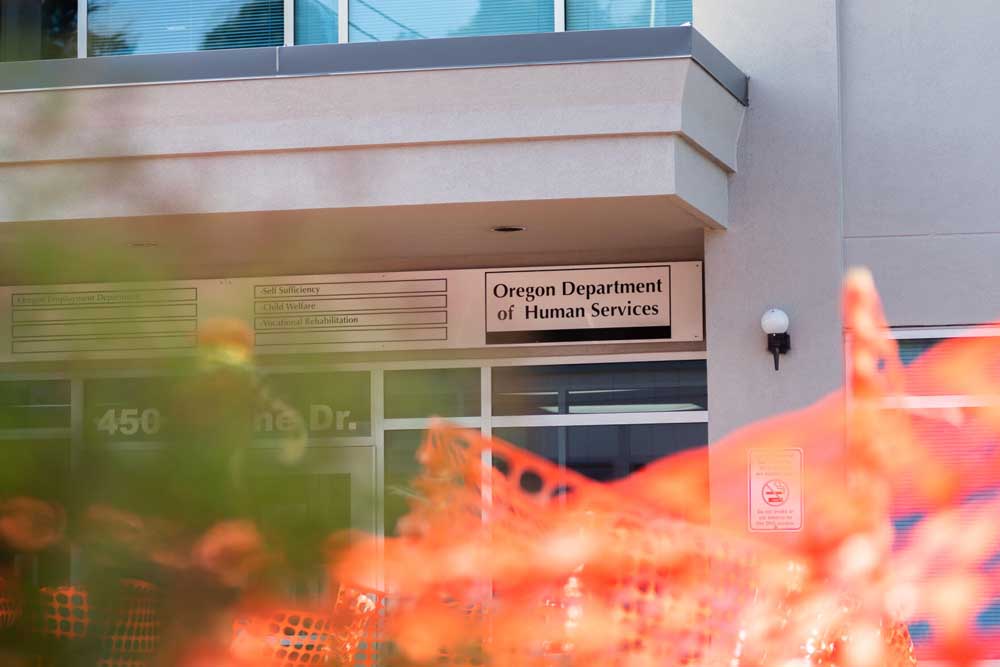State social services office in Astoria has a history of environmental problems
Published 6:00 am Sunday, June 4, 2023

- The Oregon Department of Human Services office in Astoria has been closed since late March.
The Astoria office of the Oregon Department of Human Services, which closed indefinitely in late March, sits above petroleum contamination that has been the subject of testing and investigation for more than two decades.
Trending
Public documents, including a fact sheet by the state Department of Environmental Quality from 2021, show that petroleum in the soil produces vapors that can affect air inside the office building.
When the office closed, state officials cited a building safety concern, but declined to disclose any other details.
One of the owners of the building on Marine Drive, however, told The Astorian in April that the issue stemmed from a cracked heat exchanger — a component in an HVAC system — which was causing noncombustible gas to escape into the building.
Trending
Kathy Schroeder, of Portland-based Marine Street LLC, which owns the two-story and nearly 30,000-square-foot building along the riverfront, told the newspaper that the issue was not obvious initially and there was urgency to identify the problem after some people started experiencing symptoms such as headaches.
The Astoria office houses the Department of Human Services, the Oregon Employment Department and Clatsop County services to children and families.
The Department of Human Services would not say whether petroleum contamination or vapors inside the building were connected to the state’s decision to remove workers in March.
“The Oregon Department of Human Services takes the health and safety of our clients and staff seriously,” Jake Sunderland, a spokesman for the department, said in a statement. “Our office in Astoria closed in March 2023 due to a building safety concern.”
He said air quality testing at the office building continues. Portable trailers were installed in the parking lot so people could receive social services through in-person visits. Vocational rehabilitation staff have been relocated to Clatsop Behavioral Healthcare in Warrenton.
“We will not return to this location until we are able to be sure that the location is safe for our workers and clients,” Sunderland said.
Schroeder, of Marine Street LLC, did not immediately respond to questions from The Astorian about the building’s environmental history.
Petroleum contamination
For much of the 20th century, the riverfront in Astoria was home to several oil companies that stored and distributed petroleum. A legacy of contamination has complicated redevelopment and led to drawn out and expensive cleanup and mitigation efforts.
One of the contaminated sites was the former Chevron Bulk Plant, a petroleum storage facility that spanned two city blocks between Fourth and Sixth streets off Marine Drive from the late 1890s until the 1990s, when it was decommissioned.
The office building built in 1998 and leased by the Department of Human Services sits on the western portion of the city blocks between Fourth and Fifth streets. The eastern portion includes a Chevron service station, a commercial cardlock fueling facility and a fueling dock for fishing boats.
In the early 2000s, the Department of Environmental Quality documented that widespread hydrocarbon contamination had been found in the soil and groundwater on both city blocks in the past.
Public documents posted on the department’s website provide some insight into a 20-year working relationship between the state, Chevron and the owners of the office building to address contamination, including concerns about air quality in the office building.
Chevron completed a preliminary investigation of soil vapors around the perimeter of the building between 2005 and 2006, according to the state’s fact sheet from 2021. Results showed that concentrations were below risk levels and were protective of public health.
From 2006 to 2014, the investigation focused on contamination in soil, groundwater and sediments. The Department of Environmental Quality requested further investigation into vapor intrusion in 2015 based on new investigation methods and updated regulatory screening values for petroleum hydrocarbons, which the state had revised to be more protective of public health.
Chevron submitted a work plan for further investigation of potential vapor intrusion and impacts to indoor air in 2017 that was approved by the Department of Environmental Quality.
Chevron collected additional samples between 2018 and 2019 and in 2020, testing for total petroleum hydrocarbons and naphthalene, a hydrocarbon made from crude oil or coal tar.
Results showed that concentrations of naphthalene ranged from acceptable to two times above risk-based concentrations for office workers, according to the state’s fact sheet.
The Department of Environmental Quality, according to the fact sheet, directed Chevron to install a new system or to modify the existing HVAC system to prevent vapors from entering the building in the future.
Recommendations
In a letter to Chevron Environmental Management Co. and the building owners in 2019, a project manager for the Department of Environmental Quality made recommendations to address indoor air quality and reduce concentrations to levels that would protect office workers.
The state also recommended a meeting to discuss how to address vapor intrusion at the site; the state’s expectations regarding data needs to demonstrate compliance; and how to communicate potential risk to state office workers.
After reviewing a November remedial investigation work plan prepared by Arcadis, an engineering company based in the Netherlands, on behalf of Chevron Environmental Management Co., the state shared feedback.
The state said the work plan was to complete the remedial investigation for the site and collect data adequate to complete the human health and ecological risk assessments and move toward a feasibility study.
The “investigation results to date indicate that there are petroleum hydrocarbon vapors and methane beneath the building,” the project manager for the Department of Environmental Quality wrote as part of the feedback in early April, shortly after the office building closed indefinitely. “While the HVAC system is effective in maintaining positive pressure most of the year it has not been demonstrated to prevent vapor intrusion throughout the year. Further year-round testing, HVAC adjustment or modification, or an interim remedial action should be considered as next steps in coordination with the property owner.”
The Department of Environmental Quality did not immediately respond to questions from The Astorian about the work and the next steps.








